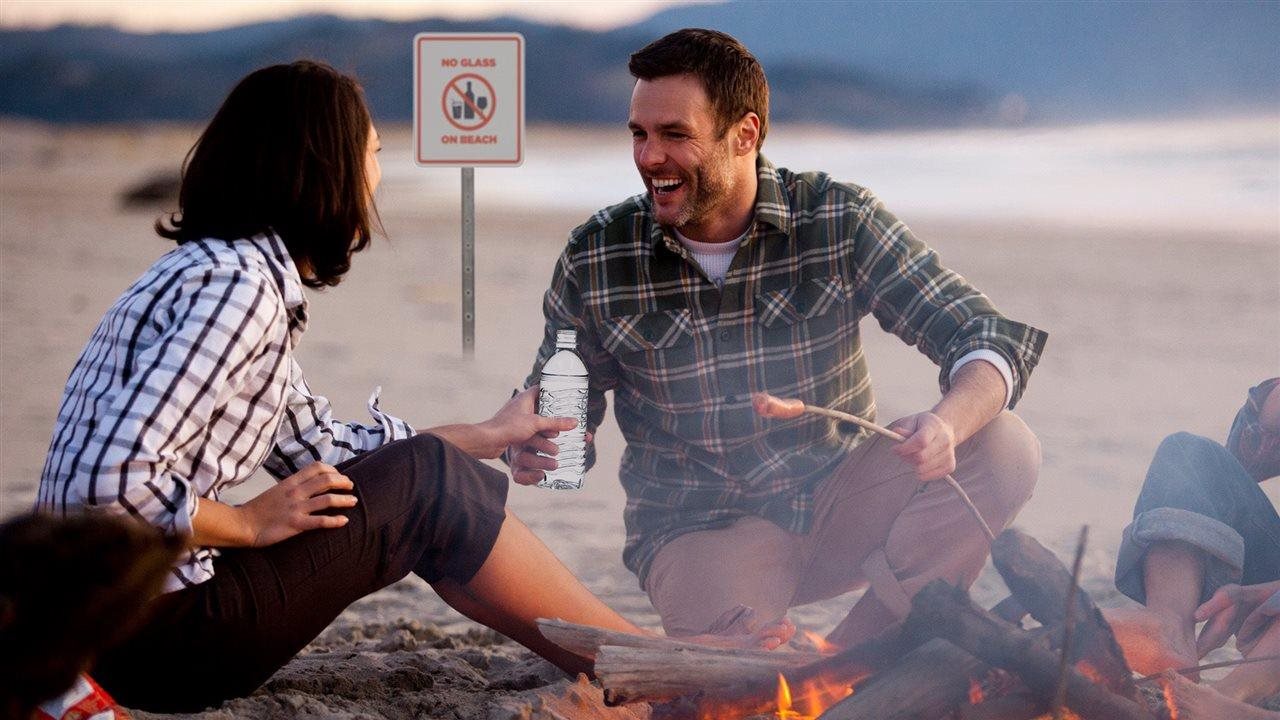
(BPT) – It’s summertime and that is the perfect time to gather family and friends for a picnic. An important aspect to consider when planning your summer picnic is environmental impact. An easy way to lower your carbon footprint is choosing items in polyethylene terephthalate, or PET. This packaging, on which you can always find the number 1 inside the chasing arrows on the bottom of the package, will make your picnic safe, sustainable and fully recyclable.
Items packaged in PET benefit your outing in ways you probably have never considered, including:
Safety
It’s always important to start with safety. When you take your wine to an outdoor concert; ketchup, mustard and mayo to the park; or beverage to the beach, nothing ruins a good time like a shattered bottle or spilled drink. This means that PET can go places glass can’t, or shouldn’t: The beach, pool side, backpacking or other outdoors activities.
By purchasing products that are packaged in PET, you eliminate the possibility of broken glass. A PET bottle is also resealable. This is great for eliminating the potential for spilled drinks. It also ensures that you can seal and re-open your bottle.
Lightweighting Technology
Over the past decade, there have been significant advancements that dramatically reduced bottle weights, in some instances by as much as 30%.
A 30% reduction per bottle is significant when you’re carrying a cooler full of drinks from your car to the beach. And the reductions are even more significant when going from glass bottles to PET bottles. For example, a PET wine bottle can be as much as 85% lighter than its glass counterpart, or eight pounds per case. That means when the products are transported to the store, it takes less fuel, which reduces environmental impact.
Sustainability
PET in most cases is better for the environment than other packaging material. A recent study conducted by the National Association for PET Container Resources found the impact of a PET bottle on global warming, smog, acid rain and water usage was far less than its glass bottle or aluminum can counterpart.
In fact, up to 77% fewer greenhouse gases are produced when making a PET bottle versus making a glass bottle and twice as many fossil fuels are drained to produce aluminum cans than PET bottles.
That means when faced with a choice between a soda in an aluminum can or PET bottle, or BBQ sauce in a glass bottle or PET jar, it’s better for the picnic, and the planet, to go with PET.
Recycle
It is also vitally important that you recycle PET containers when they are empty. PET is the most recycled plastic in the world, with more than 1.8 billion pounds of used PET bottles and containers recovered in the U.S. each year alone. Across the United States, recycling rates for PET are nearly 30%. PET can be recycled again and again, and it’s the only packaging that can be made with 100% recycled content — your glass bottle or aluminum can, well, can’t.
When we recycle, that PET bottle can be back in your hands in 60 days as a brand-new bottle. Recycling is also a great way to keep our beaches and parks clean.
When preparing for a fun day outdoors with friends and family, plan how you can best reduce your impact on the environment by taking a second look at the packaging options available. And no matter what products you take with you to the picnic, be sure to recycle whenever possible!
